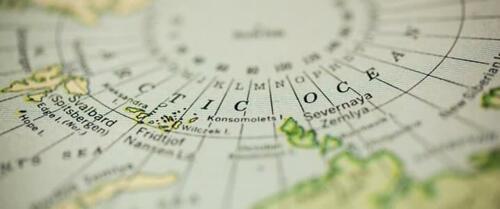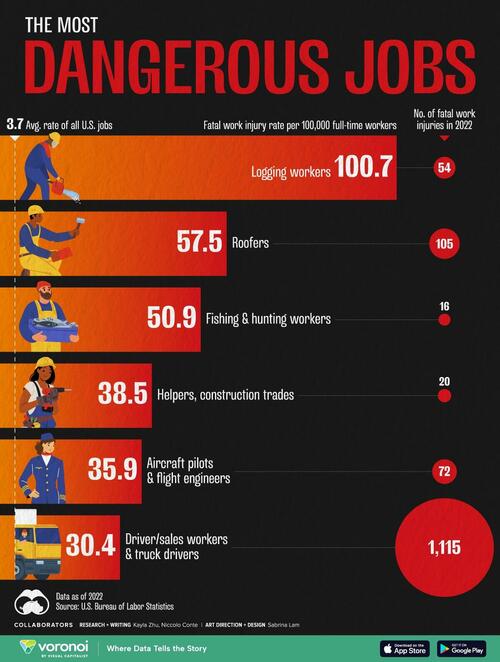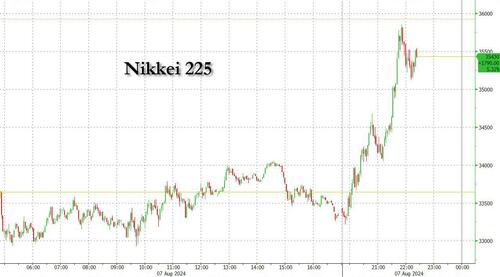Authored by Richard Truesdell and Keith Lehmann via American Greatness,
It’s amazing. The attempted assassination of former president Donald Trump happened a little more than three weeks ago. But if you follow the current coverage in the mainstream media, it’s like it never happened. The mainstream media has moved on. Of course, we’ve had a sitting president end his reelection bid and Kamala Harris ascend to the top spot without getting a single vote. This is the same as with her doomed 2020 bid when she exited the nominating race after getting eviscerated by Tulsi Gabbard in a pre-Iowa Democrat debate.

All that Harris and her campaign surrogates can talk about is how “weird” JD Vance is. This coming from a candidate who made a pre-taped campaign announcement on RuPaul’s Drag Race. It’s these Democrat parrots like Donny Deutsch and other droids on MSNBC that have ZERO self-awareness. Their narratives have effectively been debunked.
With that being said, you won’t see this on MSNBC, CNN, The Washington Post, The New York Times, or just about any MSM broadcast, online outlet, or in print. Those outlets will continue with their Trump-as-Hitler narrative every day up to November 5.
The circumstances surrounding the attempted assassination of Trump and the successful assassination of John F. Kennedy on November 23, 1963, are shockingly similar.
We are still waiting for information on all of the serial failures to protect Trump as well as the actions taken by the shooter in the days leading to the attack, but the motivations of our government seem to be very similar.
It is historically known that Kennedy tried to reduce U.S. involvement in the Vietnam War after the Cuban Missile Crisis and his worry that a nuclear exchange with the Soviets would result in catastrophic loss of life. This compelled him to strongly resist a military-industrial complex comprised of government institutions and wealthy corporate interests that were invested in escalating the Vietnam War effort and keeping the weapons and hardware flowing.
Kennedy made a lot of enemies in government, trying to reform systems that were in place for decades and angering a lot of powerful groups that were heavily invested in America’s war machine. Starting right after the end of World War II, through the establishment of the CIA 76 years ago in 1947, the CIA has been the central linchpin of the U.S. Intelligence community (IC), the so-called Deep State that is accountable to no one (not the president, either House of Congress, or any other serious oversight organization.)
Kennedy pledged to reform the intelligence community (IC) after the Bay of Pigs fiasco that took place under the lead of the IC as a way to depose Fidel Castro. Kennedy was appalled at the usurpation of his authority and made it clear that change was going to come.
We know how this ended. Kennedy’s hurriedly planned visit to Dallas, driven through an unsecured area, in an unprotected, open-air limousine, with very little Secret Service protection, and in line of sight of buildings with multiple opportunities for snipers to hide. If our government did not intend for this assassination to happen, it certainly laid out a very workable plan to fatally ambush Kennedy that could not have been more perfect.
Which brings us to Trump’s brush with death on July 13. In his first term, Trump made efforts to reform the Deep State to at least slow down the expansion of government size and the intrusion into the lives of American citizens. He put the Pentagon on notice to stop warmongering in foreign lands.
He ordered NATO countries to start paying their fair share of America’s commitment to protect them. He slowed the influx of illegal aliens, infuriating a welfare bureaucracy counting on an ever-growing underclass of immigrants to justify their existence.
Trump made a lot of enemies in government just as Kennedy had by trying to reform many of the same systems and angering many of the same moneyed interests. With four years of experience in dealing with these Deep State operators and now knowing how to really reform the administrative state, Trump has a lot of career bureaucrats worried about their jobs, perks, and power. And now Trump looks to be unbeatable in the coming election, even with the soft coup with Democrat power brokers—Obama, Pelosi, Schumer, Jeffries, and others—despite the current media infatuation and love fest with Cackling Kamala.
It is not unreasonable to assume that the organized left operation that runs the federal government from the shadows of Washington, D.C.—which sought to remove Trump from state ballots, drive him into bankruptcy, imprison him, frame him as an asset of Russia, compare him to Hitler, portray him as an existential threat to democracy, and accuse him of an insurrection—would be desperate enough to recruit an Oswald-like patsy to kill him and make sure he had the opportunity to do it.
Let’s remember that these are the same reprehensible people who have spent the last eight years telling us that Trump is a unique threat to all Americans and will imprison his rivals and act as a dictator.
Are they capable of murder? Of course they are. That is why they are demanding that all discussion of the assassination attempt be stopped and that the serial failures of the U.S. Secret Service (USSS) not be explored by anyone. Three sessions before Congress have shown us the game of CYA (cover your ass) going on by the members of the Deep State who have already testified, including disgraced former Unites States Secret Service director Kimberly Cheatle, current FBI director Chris Wray, and Cheatle’s replacement, acting USSS Director Ronald Rowe.
-
Serial failures such as:
-
Why repeated requests for additional USSS resources were denied by the Biden White House,
-
Why Trump’s regular USSS team was replaced by a veritable B-team of ill-trained and equipped agents, including three short females who could not holster their weapons, with one cowering behind Trump as shots were being fired at him,
-
How an obvious high-elevation perch only 450 feet away from the rally podium with unobstructed line-of-sight was left unguarded,
-
How a 20-year-old with a long rifle and a ladder could enter a secured perimeter,
-
How the shooter was seen by rally attendees over an hour before the attack, all the while shouting to law enforcement that milled around but did nothing to confront the shooter,
-
How the shooter was identified by police snipers at 5:51 PM, before Donald Trump, the most famous person in the world and the most targeted by his enemies, took the stage at 6:02 PM, without telling him or preventing him from taking the podium,
-
How the police snipers had the shooter in their scopes for minutes but waited until after the attack at 6:11 PM, after eight shots were made, before finally neutralizing him,
-
Why the USSS chose not to record their radio communications on this particular day at this particular rally, and,
-
Why Congressional investigators cannot get any straight answers from either USSS or DHS leadership on how this could have happened.
Only after the assassination attempt failed were Democrats power brokers like Obama, Pelosi, Schumer, and Jeffries successful in forcing Biden out of the presidential race at the behest of the Democrat donor class. Now the question is: will Biden actually serve out his term until January 20, 2025? Biden looked confused when meeting the released Russian hostages at Joint Base Andrews last week, ceding lead at the event to Vice President Harris.
We can surmise that the Secret Service is either completely inept or that it cooperated in a conspiracy to allow for the assassination of a man that the Biden administration wanted stopped after everything else had failed and after he became inevitable as the next elected president.
The entire scenario stinks of conspiracy and cover-up. This is not something we say lightly.
There is no excuse for such a blatant failure to protect the most famous and targeted person in the world. The USSS operates under a $3 billion yearly budget. There is no shortage of resources, human or otherwise, that can justify such incompetence and dereliction of duty. What the testimony found was that the USSS is plagued by management ineptitude. As a place to work in the Federal government, it ranks 319 out of 320 government agencies.
How do we move forward from here? Well, we don’t need a Warren Commission to whitewash this stunning attempt to neutralize the Republican front-runner. We don’t need a compliant legacy media to call this a “Republicans pounce” moment or to minimize their role in ratcheting up the Trump hate on their platforms. We don’t need a sorely compromised FBI to investigate this horrific attempt on Trump’s life—the same FBI that is also known for calling Hunter Biden’s laptop “Russian disinformation” and raiding Trump’s Mar-a-Lago home for FBI-doctored evidence of classified documents.
Will a House of Representatives probe get to the truth? It might but we’re not holding our breath for that to happen.
What we need here is for someone to come clean. And that someone, interestingly enough, could be Kimberly Cheatle. Yes, the former director of the USSS herself.
Why did she resign as director if there was no malfeasance or conspiracy to kill Trump? As director of the USSS, she reported to the head of DHS, Alejandro Mayorkas. All USSS plans for events, such as the rally in Butler, Pennsylvania, would have been signed off by Mayorkas or someone within his direct management. By resigning her post and, assumingly, receiving some form of immunity from prosecution, she could expose the entire plot. A lot of heads could roll.
Or not. As we’ve seen, it’s hard for anyone in government—and Democrat administrations in particular—to face accountability for failure. Even a failed attempt to murder the most famous person in the world live on television. If not for a turn of his head, history would have been far different. As a nation, we literally dodged a bullet.
A bullet that would have resulted in a civil war that would have generated untold acrimony and violence among otherwise peace-seeking patriots. A bullet that would have changed the entire world order. A bullet that would have pulled the mask away from the ridiculous notion that we are being led by a responsible and accountable government that everyone would have finally realized was a fraud.
Is this what our so-called leaders have wanted all along?
One has to wonder. What interesting times we live in.












